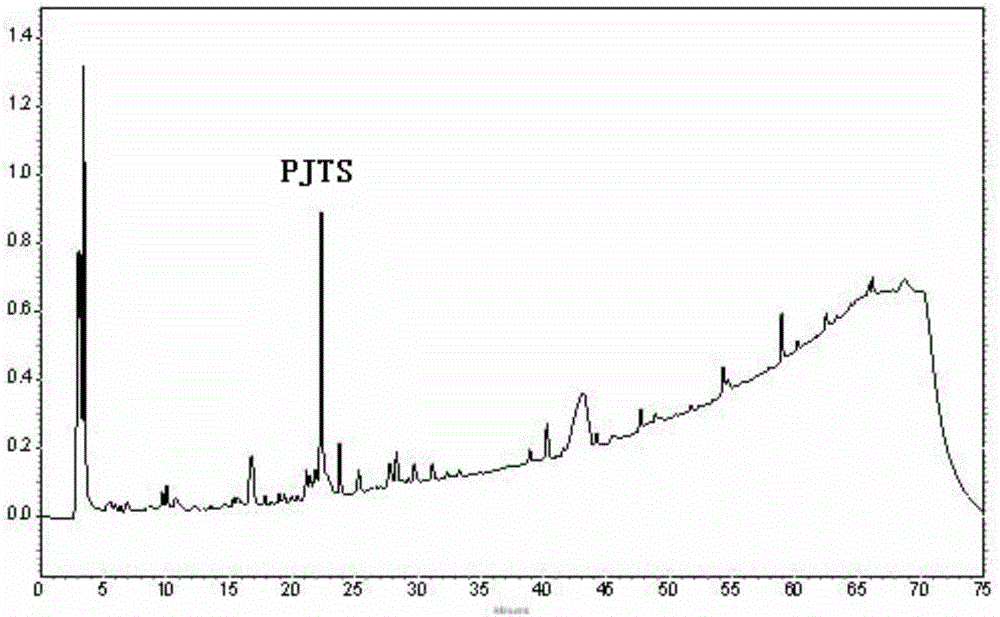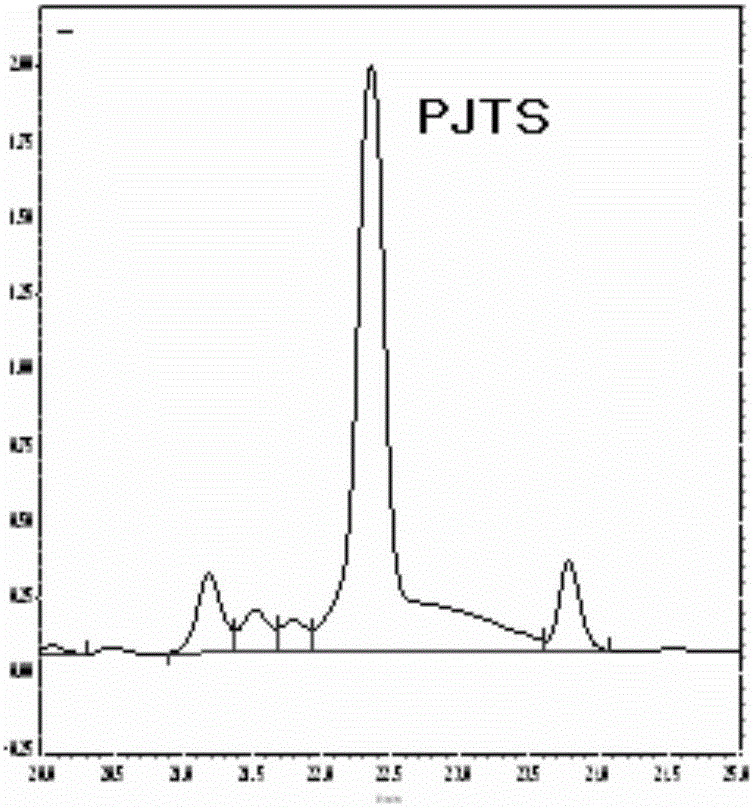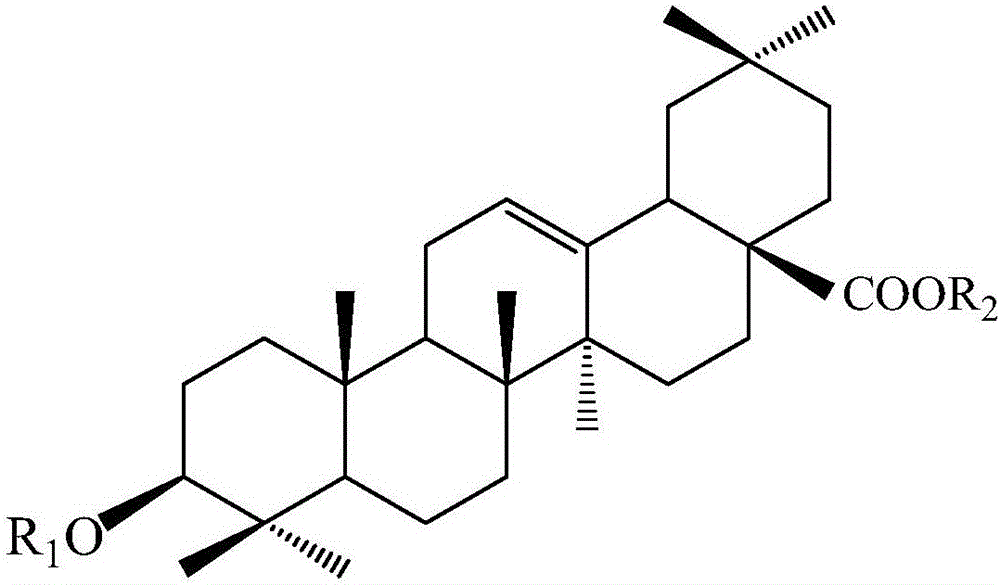Method for acquiring secondary metabolites including panax japonicus saponins and the like with large-scale culture and bioconversion technology for panax japonicus cells
A bamboo ginseng saponin and biotransformation technology, applied in the field of compounds, can solve problems such as difficult reproduction, limited growth, and difficult artificial cultivation
- Summary
- Abstract
- Description
- Claims
- Application Information
AI Technical Summary
Problems solved by technology
Method used
Image
Examples
example 1
[0038] (1) In the RW medium, add α-naphthyl acetic acid (NAA), 2,4-D or indole acetic acid (IAA) 2mg / liter and 6-bean aminopurine (6-BA) or kinetin (KT) 4mg / L, sucrose or glucose 20g / L, then adjust the pH value to 5.6 with acid or alkali, then add 2g / L gellan gum as a coagulant, and sterilize at 115-120°C and 0.1MPa pressure for 18 minutes, Cooled to make slant induction medium;
[0039] (2) Sterilize the young stems or buds of Panax ginseng as explants on the surface of 70% ethanol for 50 seconds, then sterilize them in 5% sodium hypochlorite or calcium hypochlorite solution for 20 minutes, rinse with sterile water three times , cut off the surface-sterilized shoot tips under sterile conditions, or cut the young stems into 0.5 cm or take the shoot tips and inoculate them in the above-mentioned slant induction medium. Then transfer to 25°C, 2000 Lux, 12 hours of light conditions for induction culture, and callus will form after 2 months;
[0040] (3) In the RW medium, add 1 ...
example 2
[0051] (1) In the RW medium, add α-naphthaleneacetic acid (NAA) 5mg / liter and 6-bean aminopurine (6-BA) 5mg / liter, sucrose or glucose 20g / liter, and then adjust the pH value with acid or alkali Adjust it to 5.5-7.0, then add 5g / L agar as a coagulant, sterilize at 115-120°C and 0.1MPa pressure for 15 minutes, and cool to make a slant induction medium;
[0052] (2) Sterilize the young stems or buds of Panax ginseng as explants on the surface of 75% ethanol for 30 seconds, then sterilize them in 6% sodium hypochlorite or calcium hypochlorite solution for 15 minutes, and rinse them twice with sterile water Finally, cut off the surface-sterilized shoot tip under aseptic conditions, or cut the young stem into 0.8 cm or get its shoot tip and inoculate it in the above-mentioned slant induction medium. Then transfer to 18°C, 2000 Lux, 12 hours of light conditions for induction culture, and callus will form after 2 months;
[0053] (3) Add 0.1mg / L indole acetic acid (IAA), 5mg / L and 6-...
example 3
[0064] (1) In the RW medium, add 2,4-D 0.5mg / L and kinetin (KT) 1mg / L, sucrose 30g / L, then adjust the pH value to 5.5 with acid or alkali, and then add 1.8g / L gellan gum is used as a coagulant, and after being sterilized at 115-120°C and 0.1MPa pressure for 18 minutes, it is cooled to make a slant induction medium;
[0065] (2) Sterilize the young stems or buds of Panax ginseng as explants on the surface of 70% ethanol for 40 seconds, then put them into 6% sodium hypochlorite solution for sterilization for 15 minutes, wash them three times with sterile water, and then dry them under aseptic conditions. Next, cut off the shoot tips after surface sterilization, or cut the young stems into 0.8 cm or get the shoot tips and inoculate them in the above-mentioned slant induction medium. Then transfer to 23°C, 2500 Lux, 14 hours of light conditions for induction culture, callus formed after 1 month;
[0066] (3) In the RW medium, add 2mg / L2, 4-D, 2mg / L and 6-bean aminopurine (6-BA),...
PUM
 Login to View More
Login to View More Abstract
Description
Claims
Application Information
 Login to View More
Login to View More - R&D
- Intellectual Property
- Life Sciences
- Materials
- Tech Scout
- Unparalleled Data Quality
- Higher Quality Content
- 60% Fewer Hallucinations
Browse by: Latest US Patents, China's latest patents, Technical Efficacy Thesaurus, Application Domain, Technology Topic, Popular Technical Reports.
© 2025 PatSnap. All rights reserved.Legal|Privacy policy|Modern Slavery Act Transparency Statement|Sitemap|About US| Contact US: help@patsnap.com



